[FRB-CESAB] Newsletter 11 CESAB – September 2024
The FRB’s Center for Biodiversity Synthesis and Analysis (CESAB) is a research structure with an international scope whose objective is to implement innovative work on the synthesis and analysis of existing data sets in the field of biodiversity. Twice a year, the CESAB publishes a newsletter listing the different news and activities going on.
A few words from Denis Couvet, President of the FRB, and Nicolas Mouquet, Scientific Director of CESAB

The CESAB – Centre for the Synthesis and Analysis of Biodiversity – is an original, innovative program of the FRB, internationally recognized thanks to the work of an entire team and the support of the founding members of the FRB and the Ministry in charge of research. It provides researchers with a space and time to contribute to addressing the challenges related to biodiversity loss and to implement transformative change. The complexity of these challenges has led the FRB and its board of directors to focus on intermediation, which means connecting knowledge, researchers, and research with stakeholders and society. Innovation is also needed in this area so that knowledge circulates and is embraced by both public and private decision-makers. We can envision the FRB being a driving force in accelerating this flow of knowledge, particularly through the projects funded or hosted by the CESAB, which produce groundbreaking and highly relevant knowledge. This is because the young researchers recruited come from diverse backgrounds and countries, because the project leaders at CESAB are top-level researchers, because the FRB encourages translating these findings into societal issues, and because of its unique position in the research world. Its links with stakeholders make the FRB and its CESAB a laboratory where innovation in science-based messaging is fostered. Next December, two major reports will be published by the IPBES: the first on transformative change, and the second on the Biodiversity Nexus, which includes biodiversity, food, climate, water, and health. It will be interesting to explore how the projects and research results published within the CESAB framework contribute to the intermediation of the key messages from these reports.
Denis Couvet, President of the FRB and Professor at the MNHN
We are at a key stage in the trajectory of the CESAB, which is now asserting itself as a major player in biodiversity research. We have reached true maturity, with the stabilization of numerous research groups (over 30 active groups in 2024; 500 researchers involved) producing scientific syntheses of remarkable scope. This positive dynamic also extends to our postdoctoral researchers, several of whom have secured research positions, such as Aurore Receveur from the MAESTRO group, now a research scientist at IRD, Kevin Hoeffner from the LANDWORM group, now a research scientist at INRAE, and Aaron Sexton from the NAVIDIV group, now an assistant professor at Cornell University. Congratulations to them!
At the same time, we launched the CESABinars, a new format of virtual exchanges that has been very successful. These webinars provide a platform where our researchers can share their progress and engage with the international scientific community, further strengthening our network and impact. We are also organizing an international conference in Montpellier in December with the FISHGLOB group, “Fish Biodiversity Facing Global Change.” Finally, we will be welcoming a new data scientist dedicated to the groups formed through the Synthesis call “Human Pressures and Impacts on Terrestrial Biodiversity,” in partnership with MTECT and OFB, where more than 10 groups are creating a true ecosystem within the CESAB. The coming months promise to be just as exciting, with the selection of new groups as part of our 2024 General Call for Synthesis Projects. But it will be in 2025 that we reach a new milestone with the launch of “IdeaShare,” an innovative project call format designed to stimulate creativity and explore new research avenues.
This positive momentum is made possible thanks to the FRB team dedicated to the CESAB, the true driving force of our center. Their expertise, dedication, and passion are at the heart of our success. Thank you to them! We invite you to follow these exciting developments and continue to actively participate in the life of the CESAB.
Nicolas Mouquet, Scientific Director of the CESAB and Research Director at CNRS
The number of simultaneous projects has never been higher: 35 are currently ongoing at CESAB. The first half of 2024 saw 22 weeks of meetings held at the Montpellier offices. This year also marks the start of four projects from the 2023 DATASHARE call (DYNAMITE, FARSEX, FAIRWOOD, and INVAHEALTH), and the continuation at CESAB, in collaboration with the John Wesley Powell Center, of the FRESH2O-ZOOPS synthesis group, which has been ongoing since 2023 at the American synthesis center. The projects launched in 2021 by the Ministry of Ecological Transition (MTE), in collaboration with CESAB (IMPACTS, ACOUCENE, SPATMAN, LANDWORM), have submitted their interim reports. The corresponding presentations are available on their dedicated pages on the FRB website.
The three projects from the 2023 call on “Anthropogenic pressures and impacts on terrestrial biodiversity” were selected in April—welcome to all! Launched by the FRB, this call is part of the national program for the “monitoring of terrestrial biodiversity” established by the Ministry of Ecological Transition (MTE) and the French Office for Biodiversity (OFB).
- BEYONDS, Prospective of biodiversity dynamics within degrowth scenarios, led by Clélia Sirami (INRAE) & Lauriane Mouysset(CNRS).

- FELLOW, Spatio-temporal dynamics of weed communities and their role in ecosystem services along a gradient of human pressures, led by Elena Kazakou (Institut Agro Montpellier, UMR CEFE) & Guillaume Fried (ANSES).
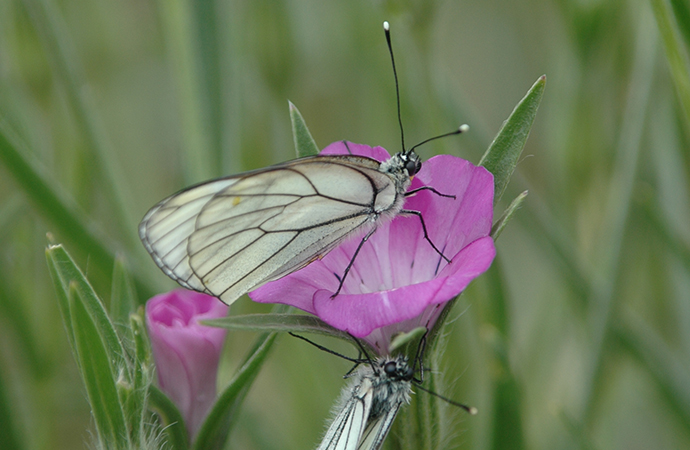
- FUNBIODIV, Functional analysis of biological control against crop pests through plant diversification at all scales, led by Aude Vialatte (INRAE) & Adrien Rusch (INRAE).
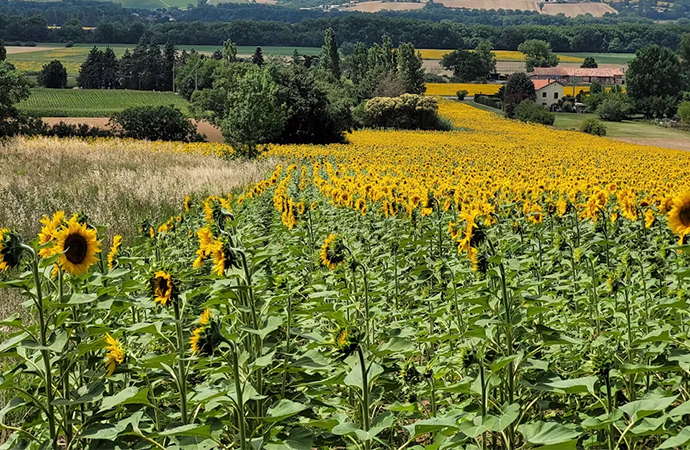
The ESEB project, “Impacts of European solar energy infrastructures on biodiversity: integrating existing knowledge to enable positive nature management and investments,” was selected as part of the ITTECOP project call, in partnership with the Ministry of Ecological Transition and ADEME, under the theme “impacts of human infrastructures (transport and renewable energy production) on biodiversity.” Additionally, the general call for synthesis projects (funded by the FRB with support from its founding members and the Ministry of Research), which takes place every two years, was launched in April. Out of 17 pre-proposals submitted, five have been selected for the second phase: results will be announced in mid-December.
Stay tuned to FRB’s social networks (X, LinkedIn) and the next newsletter to discover the selected projects!
FISHGLOB Conference – December 5 – Montpellier (Eng)
Co-funded with the Canadian synthesis center CIEE and designated as a project of the United Nations Decade of Ocean Science (UN OD), the FISHGLOB group is organizing an international conference afternoon on Friday, December 5, at the Triolet campus in Montpellier. The group will present the major results of their work: three years dedicated to fish biodiversity in the face of global changes.
This event is in partnership with the University of Montpellier and the French Embassy in Canada.
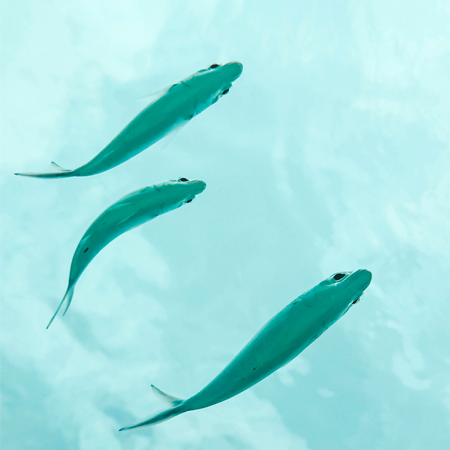
CESABinars – Online (Eng)
New for 2024, CESABinars are short online seminars allowing CESAB project leaders nearing the end of their cycle to present the results of their work. After a presentation lasting about forty minutes followed by 20 minutes of discussion, the audience gains valuable insights from their reflections and results, as well as feedback on their experiences at CESAB. The seminars are conducted entirely in English and are available on the FRB’s YouTube channel.
In June, the JUSTCONSERVATION group participated in this exercise with presentations by Brendan Coolsaet and Neil Dawson, which can be accessed here. More recently, in September, the RED-BIO group, represented by Isabelle Gounand, presented its findings on accounting for nutrient redistribution in spatial models.
Save the dates for the upcoming CESABinars:
- On October 18 at 3 PM for FREE 1, discussing the causes and consequences of functional rarity from local to global scales,
- On November 14 at 2 PM for DIVERS, focusing on reproductive strategies and plant diversity,
- On December 12 at 3 PM for FORCIS, covering the response of foraminifera to climate stress.
Details and connection links will be sent by email two weeks before the events. No prior registration is necessary.
CESABians at International Conferences
Many post-doctoral researchers participate in international conferences and present their results to the scientific community. Recently, you may have spotted Clara Marino from the RIVAGE group at the ECCB (on conservation in Europe), Aurore Receveur from the MAESTRO group at the ICES (International Council for the Exploration of the Sea), or Devi Veytia from the PPR “Ocean and Climate” at the Ocean Sciences Meeting. Coming up, you will also find six CESAB residents attending the SFE Congress in Lyon to present their work in October. Furthermore, Chloé Vagnon from the FOOD-WEBS group will be at the IsoEcol conference in Canada (focusing on stable isotope techniques for ecological studies), Kévin Hoeffner from the LANDWORM group will be at the ICSZ-ICA in South Africa (dedicated to soil zoology and apterygotes), and Cassie Speakman from the DISCAR group will be attending the Ecological Society of Australia (ESA) in Melbourne.
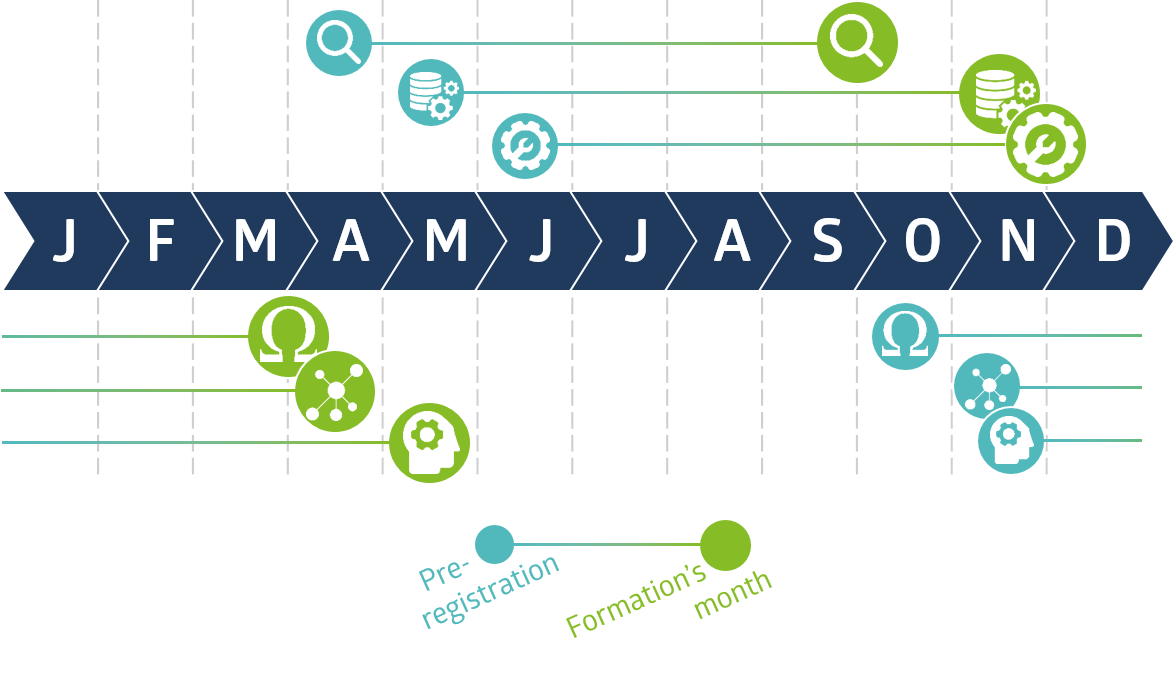
CESAB stands out for its organization of training sessions, which we hope will number six starting in 2025. A total of 280 individuals have benefited from these annual programs, valued for their quality, affordability, and friendly atmosphere. We would like to thank the teaching teams made up of 38 instructors without whom these training sessions would not exist. Many sessions are already fully booked, but don’t worry—new ones will be coming soon!
October 2024: Biodiversity knowledge synthesis: an introduction to meta-analyses and systematic reviews [Registration closed] / 3rd edition

- In french
- Introduction to meta-analyses and systematic review/mapping methods applied to the field of biodiversity
November 2024: Biodiversity data: From data collection to publication [Registration closed] / 1st edition

- In french
- Data cycle in biodiversity: from acquisition to open access, including standardization, archiving, and the publication of a data paper and data management plan
- In partnership with the Pôle National de Données de Biodiversité (PNDB) and GBIF France
December 2024: Best practice for Reproducible Research in Computational Ecology [Registration closed] / 6th edition

- In french
- Training researchers in reproducibility tools, software development, and version control (R, git, quarto, renv, docker, etc.) applied to biodiversity research
- In partnership with the GDR Ecostat
March 2025: Theory-driven Analysis of Ecological Data [Registration opens in October] / 4th edition

- In english
- Training in mathematical modeling techniques (differential equations, Lotka-Volterra, jacobian matrices, etc.) as well as the statistical interface between models and biodiversity data
- In partnership with the GDR TheoMoDive
Registration starts on October 7 via the event page
April 2025 – subject to confirmation: Analysing ecological network data [Registration opens in November] / 2nd edition

- In english
- Training in the analysis of ecological network data, through a general introduction to networks, classic metrics (including modularity, nestedness, and clustering), null models, generative models (SBM), multi-layer networks, as well as an overview of newer techniques (such as embedding), combining traditional lectures and practical case studies.
Next year, a new training session is planned on artificial intelligence for ecologists. We will provide more information in the next newsletter in January!
Departures and arrivals
Two post-doctoral researchers are heading towards new opportunities—congratulations to them:
- Devi Veytia, post-doctoral researcher for the priority research program (PPR) “Ocean and Climate” is extending her work at ENS.
- Aaron Sexton, post-doctoral researcher on the NAVIDIV project, has left the CESAB team for Munich, at TUM, before joining Cornell University as an assistant professor.
In parallel, we are pleased to welcome three new post-doctoral researchers since the beginning of 2024—welcome to:
- Miriam Beck on the IMPACTS project,
- Cassie Speakman on the DISCAR project,
- and Chloé Vagnon on the FOOD-WEBS project.
On the communication side, Violette Silve succeeds Cécile Thiaucourt as the scientific communication and animation officer. We are also expecting the arrival soon of individuals who will be recruited as post-doctoral researchers for the DRAGON and MOTIVER projects. Additionally, a new data scientist will join the existing team and will particularly focus on the groups selected under the program “Anthropic pressures and impacts on terrestrial biodiversity” in partnership with MTECT and OFB.
We wish all our colleagues, both old and new, much success in their projects, whether at CESAB or elsewhere!
Portrait – Pavanee Angelee ANNASAWMY
Data-scientist within the Blue Justice project, Pavanee Angelee Annasawmy works for a better understanding and protection of deep marine ecosystems.
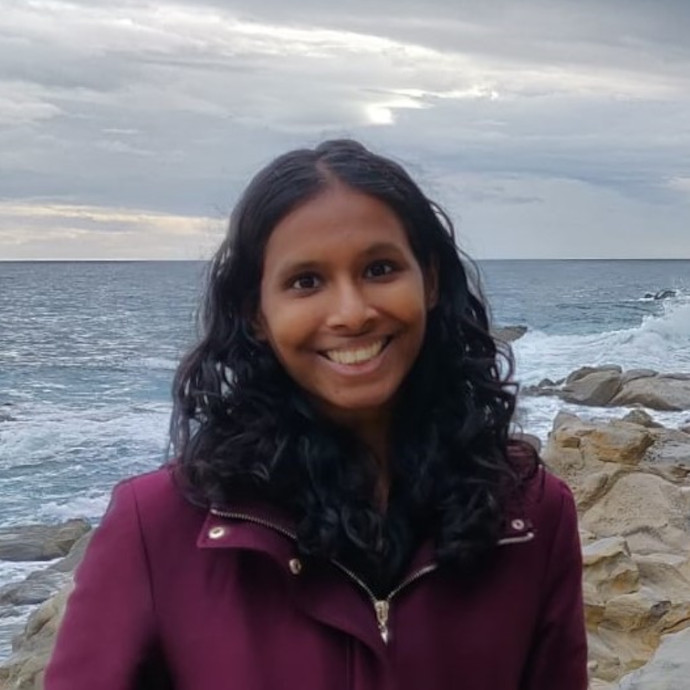
- Hello Angelee, could you explain what your research focuses on?
I am a biological oceanographer. I have been studying micronecton for 10 years. Micronecton is composed of fish, crustaceans, and squid that range from 2 to 20 cm in size and live in the deep ocean. These species are absolutely fascinating, yet poorly understood, because the existing tools for observing them have serious limitations. This is why I use many complementary approaches, such as acoustics, stable isotopes, trace metals, trawling, and recently environmental DNA, to better understand the diversity, distribution, ecology, ecotoxicology, and role of micronecton in the ocean. Recently, I have been aiming to develop new tools and autonomous robots for regular monitoring of micronecton, as observations from research vessels with a maximum autonomy of 5 weeks are insufficient to understand the functioning of micronecton within its ecosystem. My research project on the use of autonomous robots to understand the role of micronecton in the biological carbon pump is particularly relevant, given the growing interest in the commercial exploitation and biomanipulation of micronecton to harness its capacity to transport and sequester anthropogenic carbon. In my view, it is crucial to better understand the carbon transport role of micronecton before any exploitation. Therefore, I aim to push technological boundaries to deepen our knowledge of the communities inhabiting the depths of the ocean.
In this context, strengthened by my appointment to the UN in 2023 during the third global ocean assessment, as well as my designation as the French ambassador for participatory science, I aspire to combine my scientific expertise with my interest in socio-economic aspects in order to build interdisciplinary partnerships and science-governance collaborations, and to push scientific and technological frontiers for a better understanding and protection of deep marine ecosystems.
- What do you do on a daily basis, and how do your current missions differ from the three postdoctoral positions you have held?
I have been hired at FRB-CESAB since January and will be here until December as a data scientist on the Blue Justice project. Blue Justice aims to produce original, solution-oriented research based on the synthesis of several existing global databases that have already been compiled on the social and ecological conditions of marine protected areas (MPAs). More specifically, Blue Justice examines the relationship between MPA governance and their socio-ecological effects, generating new insights into the conditions that promote equity and climate resilience in vulnerable coastal groups (including women and indigenous populations). The group is working on an ocean equity index to quickly assess equity in ocean-related initiatives, projects, and policies.
I support the Blue Justice team. This position allows me to leverage my skills in data analysis and statistical modeling. Thanks to this role, I have sharpened my skills in data curation, data mining, and programming in R. These skills will be useful for my upcoming project on autonomous robots, which will generate a lot of big data.
- Are there any other actions you would like to tell us about? What can we wish you for the future?
Otherwise, I participate in many other research projects and citizen science initiatives. Since last summer, I have been the ambassador for citizen science activities in France. I have carried out many scientific outreach activities. I am part of a program called “Letters to a Prescientist.” This program, based in the United States, connects scientists with students from diverse backgrounds across the country. The goal is to motivate students to pursue higher education and careers in science and math, make science more accessible, and challenge the stereotypes or images that students may have of scientists, which often depict the stereotypical old white male scientist.
Additionally, I have wanted to create a comic book about my research topic for a few years now. So, for the past year, I have been taking weekly comic drawing classes to help me develop my comic on micronecton. So far, I have created the main and secondary characters, constructed a significant portion of the story, and started drawing my characters. I would like to publish my comic and make it known to the general public once it’s finished. You could wish for me to find a permanent position at CNRS and for my funding applications for my project on micronecton carbon transport to be accepted.
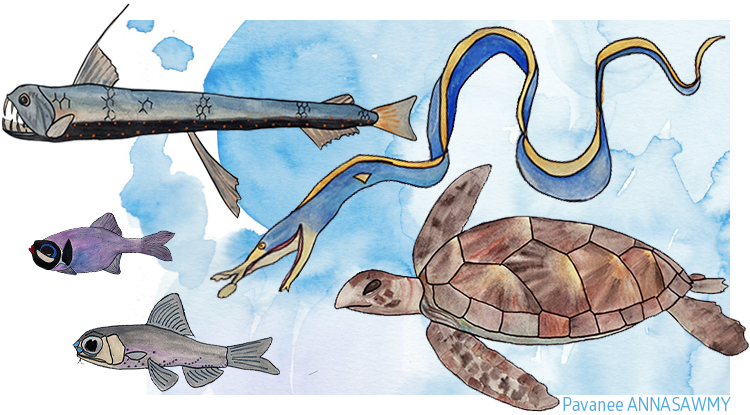
- Pradel, R., Renaud, P.-C., Pays, O., Scholte, P., Ogutu, J. O., Hibert, F., Casajus, N., Mialhe, F., & Fritz, H. (2024). Establishing large mammal population trends from heterogeneous count data. Ecology and Evolution, 14(8), e70193. https://doi.org/10.1002/ece3.70193
- Lawlor, J.A., Comte, L., Grenouillet, G., Lenoir, J., Baecher, J. A., Bandara, R. M. W. J., Bertrand, R., Chen, I.-C., Diamond, S., Lancaster, L. T., Moore, N. A., Murienne, J., Oliveira, B. F., Pecl, Pinsky, M. L., G.T., Rolland, J., Rubenstein, M. A., Scheffers, B. R., Thompson, L. M., van Ameron, B., Villalobos, F., Weiskopf, S. R. & Sunday, J. (2024) Mechanisms, detection and impacts of species redistributions under climate change. Nature Reviews Earth & Environment 5, 351–368. https://doi.org/10.1038/s43017-024-00527-z
- Lenoir, J. (2024) The continental divide in range-shifting birds of North America. Proceedings of the National Academy of Sciences 121, e2401808121. https://doi.org/10.1073/pnas.2401808121
- Lenoir, J. & Comte, L. (2024) Rapid range shifters show unexpected population dynamics. Nature Ecology & Evolution 8, 850-851, https://doi.org/10.1038/s41559-024-02354-3
[BIOSHIFTS & FRAGSHIFTS]
- Comte, L., Bertrand, R., Diamond, S., Lancaster, L. T., Pinsky, M. L., Scheffers, B. R., Baecher, J. A., Bandara, R. M. W. J., Chen, I.-C., Lawlor, J. A., Moore, N. A., Oliveira, B. F., Murienne, J., Rolland, J., Rubenstein, M. A., Sunday, J., Thompson, L. M., Villalobos, F., Weiskopf, S. R., & Lenoir, J. (2024). Bringing traits back into the equation: A roadmap to understand species redistribution. Global Change Biology 30, e17271. https://doi.org/10.1111/gcb.17271
- Claudet, J., Blythe, J., Gill, D. A., Bennett, N. J., Gurney, G. G., Evans, L., Mahajan, S. L., Turner, R. A., Ahmadia, G. N., Ban, N. C., Epstein, G., Jupiter, S. D., Lau, J., Mangubhai, S., Zafra-Calvo, N., Lazzari, N., Baggio, J. A., Bernard, M. L., Brun, V., … Naggea, J. (2024). Advancing ocean equity at the nexus of development, climate and conservation policy. Nature Ecology & Evolution, 8(7), 1205‑1208. https://doi.org/10.1038/s41559-024-02417-5
[FORCIS]
- Chaabane, S., de Garidel-Thoron, T., Giraud, X., Meilland, J., Brummer, G.-J. A., Jonkers, L., Mortyn, P. G., Greco, M., Casajus, N., Kucera, M., Sulpis, O., Kuroyanagi, A., Howa, H., Beaugrand, G., & Schiebel, R. (2024). Size normalizing planktonic Foraminifera abundance in the water column. Limnology and Oceanography: Methods. https://doi.org/10.1002/lom3.10637
- Smart, S. M., Schiebel, R., Jochum, K. P., Chaabane, S., Jentzen, A., Repschläger, J., Stoll, B., Weis, U., & Haug, G. H. (2024). Sightings of the Rare Globorotalia Cavernula in the Subantarctic South of Africa : Biogeochemical and Ecological Insights. Journal of Foraminiferal Research, 54(2), 81‑94. https://doi.org/10.61551/gsjfr.54.2.81
[FREE]
- Litchman, E., Villéger, S., Zinger, L., Auguet, J.-C., Thuiller, W., Munoz, F., Kraft, N. J. B., Philippot, L., & Violle, C. (2024). Refocusing the microbial rare biosphere concept through a functional lens. Trends in Ecology & Evolution, S0169534724001435. https://doi.org/10.1016/j.tree.2024.06.005
- Dawson, N. M., Coolsaet, B., Bhardwaj, A., Booker, F., Brown, D., Lliso, B., Loos, J., Martin, A., Oliva, M., Pascual, U., Sherpa, P., & Worsdell, T. (2024). Is it just conservation? A typology of Indigenous peoples’ and local communities’ roles in conserving biodiversity. One Earth, 7(6), 1007‑1021. https://doi.org/10.1016/j.oneear.2024.05.001
- Dawson, N. M., Coolsaet, B., Bhardwaj, A., Brown, D., Lliso, B., Loos, J., Mannocci, L., Martin, A., Oliva, M., Pascual, U., Sherpa, P., & Worsdell, T. (2024). Reviewing the science on 50 years of conservation : Knowledge production biases and lessons for practice. Ambio. https://doi.org/10.1007/s13280-024-02049-w
[MAESTRO]
- Receveur, A., Leprieur, F., Ellingsen, K. E., Keith, D., Kleisner, K. M., McLean, M., Mérigot, B., Mills, K. E., Mouillot, D., Rufino, M., Trindade-Santos, I., Van Hoey, G., Albouy, C., & Auber, A. (2024). Long-term changes in taxonomic and functional composition of European marine fish communities. Ecography. https://doi.org/10.1111/ecog.07234
- Gröger, M., Börgel, F., Karsten, S., Meier, H. E. M., Safonova, K., Dutheil, C., Receveur, A., & Polte, P. (2024). Future climate change and marine heatwaves—Projected impact on key habitats for herring reproduction. Science of The Total Environment, 951, 175756. https://doi.org/10.1016/j.scitotenv.2024.175756
[NAVIDIV]
- Sexton, A. N., Beisel, J.-N., Staentzel, C., Wolter, C., Tales, E., Belliard, J., Buijse, A. D., Martínez Fernández, V., Wantzen, K. M., Jähnig, S. C., Garcia de Leaniz, C., Schmidt-Kloiber, A., Haase, P., Forio, M. A. E., Archambaud, G., Fruget, J.-F., Dohet, A., Evtimova, V., Csabai, Z., … Jeliazkov, A. (2024). Inland navigation and land use interact to impact European freshwater biodiversity. Nature Ecology & Evolution, 8(6), 1098‑1108. https://doi.org/10.1038/s41559-024-02414-8
[PARSEC]
- Ben Abbes, A., Machicao, J., Corrêa, P. L. P., Specht, A., Devillers, R., Ometto, J. P., Kondo, Y., & Mouillot, D. (2024). DeepWealth : A generalizable open-source deep learning framework using satellite images for well-being estimation. SoftwareX, 27, 101785. https://doi.org/10.1016/j.softx.2024.101785
- Loiseau, N., Mouillot, D., Velez, L., Seguin, R., Casajus, N., Coux, C., Albouy, C., Claverie, T., Duhamet, A., Fleure, V., Langlois, J., Villéger, S., & Mouquet, N. (2024). Inferring the extinction risk of marine fish to inform global conservation priorities. PLOS Biology, 22(8), e3002773. https://doi.org/10.1371/journal.pbio.3002773
- Lécuyer, L., Balian, E., Butler, J. R. A., Barnaud, C., Calla, S., Locatelli, B., Newig, J., Pettit, J., Pound, D., Quétier, F., Salvatori, V., Von Korff, Y., & Young, J. C. (2024). The importance of understanding the multiple dimensions of power in stakeholder participation for effective biodiversity conservation. People and Nature. https://doi.org/10.1002/pan3.10672
[RIVAGE]
- Marino, C., Journiac, L., Liu, C., Jeschke, J. M., & Bellard, C. (2024). The anthropocene biogeography of alien birds on islands: Drivers of their functional and phylogenetic diversities. Ecology Letters, 27(6). https://doi.org/10.1111/ele.14465
[CESABatic – SOFIC]
- Letessier, T. B., Mouillot, D., Mannocci, L., Jabour Christ, H., Elamin, E. M., Elamin, S. M., Friedlander, A. M., Hearn, A., Juhel, J.-B., Kleiven, A. R., Moland, E., Mouquet, N., Nillos-Kleiven, P. J., Sala, E., Thompson, C. D. H., Velez, L., Vigliola, L., & Meeuwig, J. J. (2024). Divergent responses of pelagic and benthic fish body-size structure to remoteness and protection from humans. Science, 383(6686), 976‑982. https://doi.org/10.1126/science.adi7562
[Cesab members]
- Mouquet, N., Langlois, J., Casajus, N., Auber, A., Flandrin, U., Guilhaumon, F., Loiseau, N., McLean, M., Receveur, A., Stuart Smith, R. D., & Mouillot, D. (2024). Low human interest for the most at-risk reef fishes worldwide. Science Advances, 10(29). https://doi.org/10.1126/sciadv.adj9510
- Receveur, A., Bonfanti, J., D’Agata, S., Helmstetter, A. J., Moore, N. A., Oliveira, B. F., Petit-Cailleux, C., Rievrs Borges, E., Schultz, M., Sexton, A. N., & Veytia, D. (2024). David versus Goliath : Early career researchers in an unethical publishing system. Ecology Letters, 27(3). https://doi.org/10.1111/ele.14395
- Receveur, A., Menkes, C., Lengaigne, M., Ariza, A., Bertrand, A., Dutheil, C., Cravatte, S., Allain, V., Barbin, L., Lebourges-Dhaussy, A., Lehodey, P., & Nicol, S. (2024). A rare oasis effect for forage fauna in oceanic eddies at the global scale. Nature Communications, 15(1), 4834. https://doi.org/10.1038/s41467-024-49113-3
- Schiebel, R., Aardema, H. M., Calleja, M. Ll., Dragoneas, A., Heins, L., Hrabe de Angelis, I., Pöhlker, C., Slagter, H., Vonhof, H., Walter, D., Arns, A. I., Adolphs, N., Auderset, A., Basic, S., Bieler, A., Brüwer, J. D., Chaabane, S., Cheng, Y., Chiliński, M. T., … Haug, G. H. (2024). Preface : Special Issue on Probing the Open Ocean With the Research Sailing Yacht Eugen Seibold for Climate Geochemistry. Journal of Geophysical Research: Atmospheres, 129(17), e2023JD040581. https://doi.org/10.1029/2023JD040581
Toutes les publications du Cesab
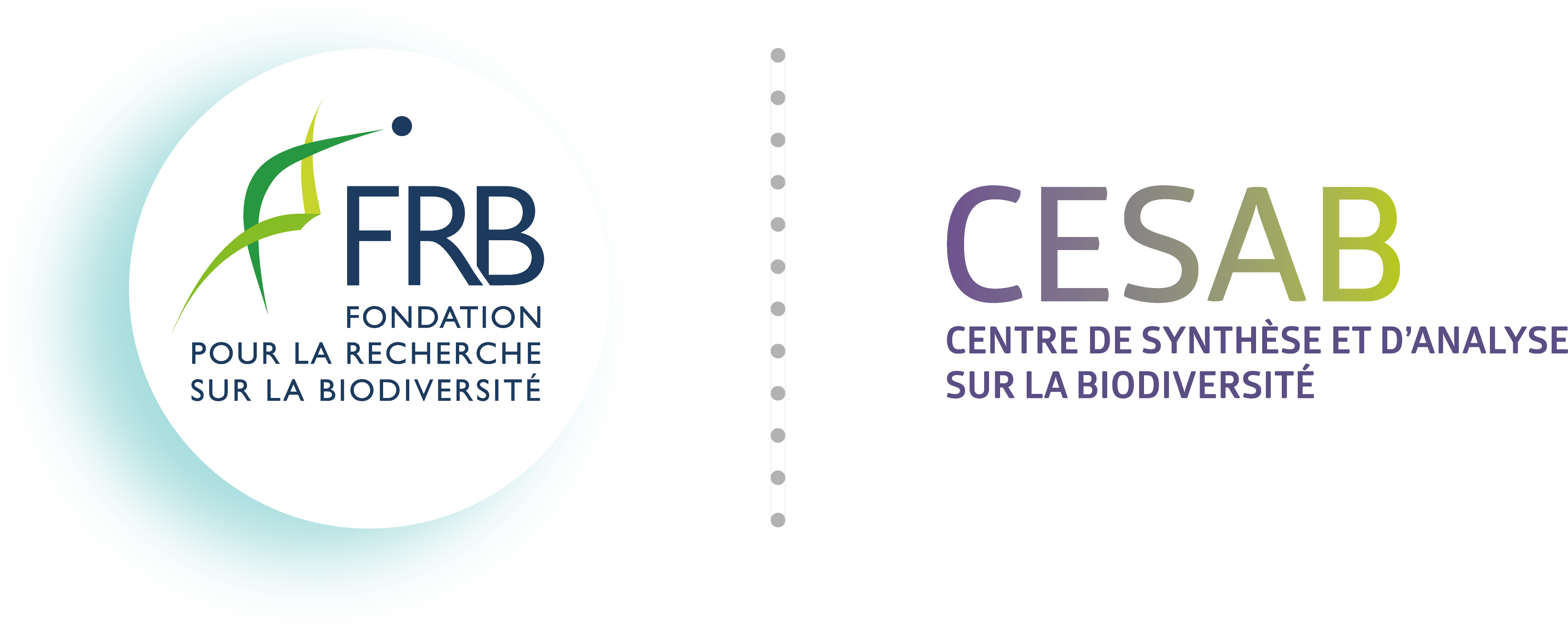
Pour recevoir directement les newsletters du Cesab, abonnez-vous !
Les précédentes newsletters :
– July 2019 [ENG]